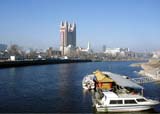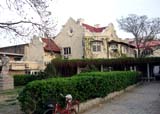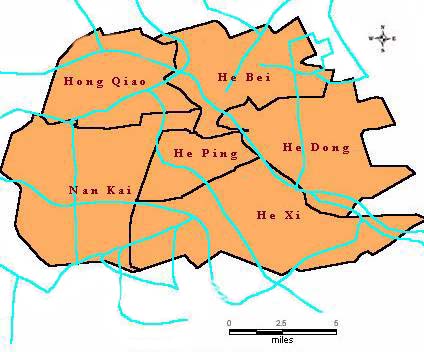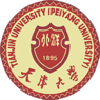Tianjin City Facts & DistrictsTianjin belongs to the 8th eastern international time zone. At the center of the Bohai Sea Economic Circle along the west coast of the Pacific Ocean, Tianjin backs onto North China, Northwest China and Northeast China and faces Northeast Asia, and it is only 120 kilometers away from Beijing, capital of China. Tianjin enjoys great advantages of being the largest port city in the north and thereby provides a channel for over a dozen provinces and cities in the north of China to communicate with foreign friends.
The population of Tianjin Municipality was 10.24 million, of which 9.33 million were holders of Tianjin hukou (permanent residence). The majority of Tianjin residents are Han Chinese. Minorities include Hui, Koreans, Manchus, and Mongols. People from urban Tianjin speak Tianjin dialect, which comes under the Mandarin subdivision of spoken Chinese. Despite its proximity to Beijing, Tianjin dialect sounds quite different from Beijing dialect, which provides the basis for Putonghua, official spoken language of the People's Republic of China.
Tianjin is one of the four municipalities of China. As a municipality, Tianjin has provincial-level status and comes directly under the central government. Tianjin's urban area is the third largest city in China behind Shanghai and Beijing. Tianjin's urban area is located along the Ha He River. Its ports, some distance away, are located on Bohai Gulf in the Pacific Ocean. Tianjin Municipality borders Hebei province to the north, south, and west; the municipality of Beijing is to the northwest and Bohai Gulf to the east. Tianjin is divided into 18 county-level divisions, including 15 districts and 3 counties. Six of the districts govern the urban area of Tianjin. Heping District Heping District in Tianjin, also known as the Peace District, functions as the city's main stage for tourist activity. As the former concession area for Great Britain and France, its streets are lined with an unusual mix of contemporary skyscrapers and old colonial buildings. The Tianjin Concert Hall, the Art Museum, the Catholic Church and famous Ancient Culture Street are all within its confines as well.   Hebei District Located north of Heping, the Hebei District feels calmer compared to Tianjin's downtown fast pace. This area is within walking distance of Ancient Culture Street and the architecturally impressive Notre Dame des Victories. Beining Park is relatively close too (relative as in hop in a taxi) and is highlighted by the Zhiyuan Pagoda. Hongqiao District Situated northwest of downtown, the Hongqiao District is best known for where visitors go to snap photos of the Grand Mosque. Otherwise, there is little else to see from a tourist's perspective. Hexi used to be a German colony during Tianjin's "concession years," thus this area has a great mix of German architecture. Nankai District Nankai District is one of the administrative districts of Tianjin municipality, which locates in the southwest of the central zone with the area of 40.64 square kilometers and the population of 870,000. Nankai District is an urban area full of vitality, characterized by its commercial, technical and cultural activities, having favorable conditions and advantage for integrated development. Nankai District is the hi-tech industrial area of Tianjin. The national hi-tech industrial park - Tianjin New Technology Industry Area is seated in Nankai District. Nankai Technology Park, covering an area of 12.22 square kilometers, is the policy area of Tianjin New Technology Industry Area. Hedong District Hedong District is one of the earliest central cities in Tianjin. It is named after its location on the east bank of Haihe River. It has a population of 73,000 people and covers an area of 40 square kilometer. It is the frontier connecting the central districts with the New Coastal Area and the important place for the east transfer of the economic center of Tianjin. |
|||||||||||||||||||||||||||||||||||||||||||||||||||||||||



